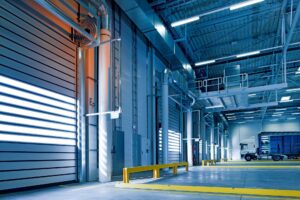
Choosing the Right Size: A Guide to Selecting the Perfect Steel Building Size
When it comes to investing in a steel building, one of the most crucial decisions you’ll make is selecting the right size. The size of your steel building will determine its functionality, versatility, and suitability for your specific needs. In this comprehensive guide, we’ll explore the factors to consider and the key steps involved in choosing the perfect size for your steel building project.
COMPARE QUOTESUnderstanding Your Requirements
Before diving into the specifics of steel building sizes, it’s essential to assess your requirements thoroughly. Consider the purpose of the building, your current needs, and any potential future expansion or changes that might affect the size you choose. Here are some key factors to evaluate:
Functionality and Usage
Determine how you plan to use the steel building. Will it serve as a garage, warehouse, workshop, or commercial space? Each function will have different size requirements based on the equipment, storage capacity, or working area needed.
Space Considerations
Evaluate the available space on your property where the steel building will be located. Consider setbacks, zoning regulations, and any other limitations that might affect the size of the building.
Future Growth
Anticipate any potential growth or expansion in your business or personal needs. If you foresee an increase in storage requirements or the addition of more equipment or employees, factor in the necessary space for future growth.
Determining the Ideal Size
Once you have a clear understanding of your requirements, it’s time to determine the ideal size for your steel building. Here are the key steps involved in this process:
1. Assessing Square Footage Needs
Start by calculating the required square footage based on your usage and functionality. Consider the dimensions needed for specific purposes, such as vehicle storage, workspace, or storage shelves. Remember to account for any additional features like bathrooms, offices, or mezzanine floors.
2. Height Considerations
Evaluate the required height of the building to accommodate tall equipment, machinery, or vertical storage. Consider the ceiling clearance needed for comfortable movement and efficient utilization of the space.
3. Planning for Clearance and Accessibility
Ensure there is adequate clearance space around the building for vehicles, loading docks, or access doors. Plan for entry points, windows, and other features that facilitate easy access and efficient workflow within the building.
4. Consult with Experts
Consulting with steel building professionals or manufacturers is highly recommended. They can provide valuable insights and guidance based on their expertise and experience. They will help you assess your requirements accurately and suggest appropriate size options that meet your needs.
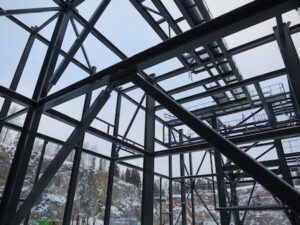
Benefits of Choosing the Right Size
Selecting the right size for your steel building offers several significant benefits:
Optimal Space Utilization
Choosing the ideal size ensures efficient utilization of the available space, maximizing storage capacity or workspace. It prevents wasted space or constraints due to inadequate dimensions.
Cost Efficiency
By accurately determining the required size, you avoid overbuilding or underutilizing space, which can lead to unnecessary costs. An appropriately sized steel building optimizes material usage and construction expenses.
Future-Proofing
Selecting a size that accommodates future growth or changes saves you from the hassle and costs of expanding or relocating in the future. It allows you to adapt to evolving needs without compromising functionality or productivity.
Choosing the right size for your steel building is a critical decision that requires careful consideration of your requirements and future plans. By assessing functionality, space considerations, and potential growth, you can determine the ideal size that meets your needs while allowing for flexibility and scalability. Consult with experts, calculate square footage needs, and plan for accessibility to make an informed decision. With the right-sized steel building, you can benefit from optimal space utilization, cost efficiency, and future-proofing. Working closely with steel building professionals ensures that you make informed decisions and achieve a successful outcome.
COMPARE QUOTESRemember, selecting the perfect size for your steel building is not a one-size-fits-all approach. Each project is unique, and careful consideration of your specific requirements is crucial. Take the time to evaluate your functional needs, space limitations, and future growth plans. Consult with experts who can guide you through the process and provide valuable insights based on their expertise.
Once you have determined the ideal size, you can proceed with the design, customization, and construction phases of your steel building project. With a properly sized steel building, you can enjoy a functional, versatile, and efficient space that meets your needs both now and in the future.
Whether you’re looking to build a compact workshop, a large-scale warehouse, or a commercial space, choosing the right size sets the foundation for a successful project. By following the steps outlined in this guide and collaborating with professionals, you can confidently select the perfect size for your steel building and embark on a journey toward a structurally sound and functional space.
Remember, selecting the right size is just one aspect of the overall steel-building process. Consider other important factors such as design, customization options, construction materials, and budgeting. With careful planning and attention to detail, your steel building project can result in a remarkable structure that perfectly suits your needs and withstands the test of time.
What are Steel Buildings?
Steel buildings, also known as metal buildings, are structures constructed primarily using steel as the main building material. These buildings offer numerous advantages, including durability, versatility, and cost-effectiveness. They are widely used in various industries and sectors due to their strength, flexibility, and ability to withstand diverse environmental conditions.
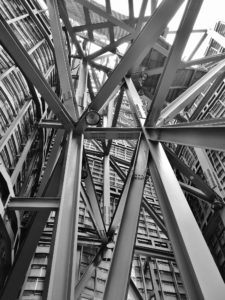
Common Uses for Steel Buildings
Steel buildings find applications across a wide range of industries and purposes. Let’s explore some of the most common uses for steel buildings:
- Commercial Buildings: Steel buildings are popular choices for commercial purposes such as offices, retail stores, restaurants, and shopping centers. They provide open floor plans, allowing for flexible interior layouts and easy customization. Steel buildings can accommodate large open spaces, and expansive windows for natural light, and can be designed to meet specific branding requirements.
- Warehouses and Distribution Centers: Steel buildings are widely used for warehouses and distribution centers due to their large clear-span capabilities. These structures can provide unobstructed floor space, making it easier to store and transport goods efficiently. With their high ceilings and customizable layouts, steel buildings offer ample storage capacity and can accommodate automated systems for inventory management.
- Manufacturing Facilities: Steel buildings are ideal for manufacturing facilities as they provide a strong, durable, and secure environment. These structures can be customized to accommodate heavy machinery, equipment, and assembly lines. With their wide clear spans, they offer flexible floor plans and can incorporate features like cranes, mezzanine floors, and ventilation systems.
- Agricultural Buildings: Steel buildings are commonly used for agricultural purposes, including barns, storage sheds, livestock shelters, and equipment storage. Their durability and weather-resistant properties make them suitable for protecting crops, livestock, and machinery from harsh environmental conditions. Steel buildings can also be customized to include features like ventilation, insulation, and specialized areas for specific agricultural activities.
- Garages and Vehicle Storage: Steel buildings are an excellent choice for garages, carports, and vehicle storage facilities. With their versatility and customizable designs, they provide secure storage solutions for vehicles, RVs, boats, and other recreational equipment. Steel buildings offer protection from the elements and can be tailored to include additional features like windows, doors, and insulation.
- Sports and Recreation Facilities: Steel buildings are increasingly used for sports and recreation facilities such as indoor arenas, gyms, swimming pools, and ice rinks. Their clear-span capabilities allow for large open spaces that can accommodate sports activities, seating arrangements, and equipment. Steel buildings provide versatility in design, allowing for customized layouts to meet the specific requirements of different sporting or recreational activities.
- Educational and Institutional Buildings: Steel buildings are suitable for educational institutions, including schools, colleges, and universities. They offer cost-effective construction solutions and can be designed to accommodate classrooms, lecture halls, administrative offices, and other educational facilities. Steel buildings provide a safe and durable environment for learning institutions and can be customized to meet specific educational requirements.
These are just a few examples of the diverse range of applications for steel buildings. From commercial and industrial purposes to agricultural and recreational facilities, steel buildings offer a versatile and reliable solution for various construction needs. Their flexibility, strength, and cost-effectiveness make them a popular choice across different industries, providing durable and sustainable structures for long-term use.
COMPARE QUOTESSteel Building Kits: How They Work and Their Benefits
Steel building kits offer a convenient and cost-effective solution for those looking to construct a steel building. These kits provide all the necessary components and materials needed to assemble a steel building, making the construction process streamlined and efficient. Let’s delve into how metal building kits work and explore their benefits.
Components of a Steel Building Kit:
A typical steel building kit includes the following components:
- Primary Framing: This consists of the main structural components, such as rigid frames, columns, and rafters, which form the skeleton of the building. These components are usually pre-engineered and designed to meet specific building codes and load requirements.
- Secondary Framing: Secondary framing components include wall girts, roof purlins, and bracing. They provide additional support and stability to the structure.
- Sheeting and Cladding: The kit also includes metal panels, typically made of steel, for the walls and roof. These panels provide the exterior cladding and protection against the elements.
- Doors and Windows: Many steel building kits include pre-framed openings for doors and windows. These openings make the installation process easier and allow for customization based on specific requirements.
- Fasteners and Accessories: The kit includes all the necessary fasteners, bolts, screws, and sealants required for assembling the components. Accessories such as gutters, downspouts, and insulation may also be included or available as add-ons.
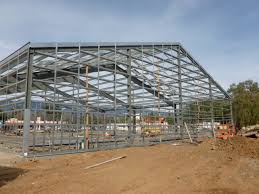
How Steel Building Kits Work:
- Design and Customization: Steel building kits offer flexibility in terms of design and customization. Customers can choose from various sizes, styles, roof pitches, and optional features to meet their specific needs and preferences. Design software and support from the kit provider help customers create the desired layout and select appropriate components.
- Delivery: Once the kit is ordered, the components are manufactured and prepared for delivery. They are typically packaged and shipped directly to the construction site. The kit provider ensures that all components are included and provides detailed instructions for assembly.
- Construction: The assembly process begins with the foundation preparation. Steel building kits can be installed on various foundation types, including concrete slabs or piers. Detailed instructions guide the construction process, and components are typically designed for easy installation. Basic construction skills and tools are generally sufficient for assembling the kit.
- Finishing Touches: After the structural components are erected, the sheeting and cladding are installed to complete the exterior of the building. Doors, windows, and additional accessories are added based on the customer’s specifications.
Benefits of Steel Building Kits:
Steel building kits offer several advantages, making them a popular choice for construction projects:
- Cost-effective: Steel building kits are often more cost-effective than traditional construction methods. They eliminate the need for custom design and engineering, reducing both material and labor costs.
- Efficiency and Speed: With pre-engineered components and detailed instructions, steel building kits allow for quick and efficient construction. The streamlined assembly process saves time and reduces construction delays.
- Customization: Steel building kits provide flexibility in design and customization. Customers can choose from various sizes, styles, and optional features to create a building that meets their specific requirements.
- Durability and Strength: Steel buildings are known for their strength and durability. The components in steel building kits are designed to withstand diverse weather conditions, ensuring a long-lasting and reliable structure.
- Versatility: Steel building kits can be used for various applications, including commercial, industrial, agricultural, and residential purposes. Their versatility makes them suitable for a wide range of construction needs.
Steel building kits offer a convenient and cost-effective way to construct steel buildings. With their pre-engineered components and detailed instructions, steel building kits simplify the construction process, allowing for efficient assembly and customization. Here are a few additional benefits of steel building kits:
COMPARE QUOTES- Sustainability: Steel is a highly sustainable material. It is recyclable and can be repurposed, reducing environmental impact. Steel building kits contribute to green building practices, making them an eco-friendly choice for construction projects.
- Low Maintenance: Steel buildings require minimal maintenance compared to traditional building materials. Steel is resistant to pests, mold, and rot, eliminating the need for frequent repairs or replacements. This translates to long-term cost savings and reduced upkeep efforts.
- Expandability and Portability: Steel building kits offer the advantage of expandability. If your needs change or you require additional space in the future, steel buildings can easily be expanded by adding more components to accommodate growth. Additionally, they can be disassembled and relocated if necessary, offering flexibility and portability.
- Structural Integrity: Steel buildings are known for their structural integrity and resistance to harsh weather conditions. Steel components are designed to withstand high winds, heavy snow loads, and seismic activity, ensuring a safe and secure building.
- Insurance Benefits: Many insurance companies recognize the durability and fire-resistant properties of steel buildings. This often results in lower insurance premiums, providing additional cost savings over the life of the structure.
Steel building kits offer a convenient and cost-effective solution for constructing a variety of buildings. With their pre-engineered components, customization options, and ease of assembly, they provide numerous benefits, including cost savings, efficiency, durability, and sustainability. Whether you’re planning a commercial, industrial, agricultural, or residential project, steel building kits offer a versatile and reliable solution that meets your specific construction needs.
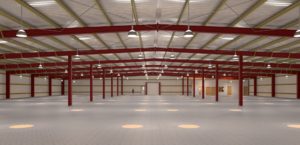
Having a Steel Building Professionally Built: Costs and Considerations
While steel building kits offer a convenient option for construction, there are instances where hiring professionals to build your steel building may be the preferred choice. Professional steel building contractors bring expertise, experience, and specialized equipment to ensure a seamless and high-quality construction process. Let’s explore the considerations and costs associated with having a steel building professionally built.
Benefits of Professional Steel Building Construction:
- Expertise and Experience: Professional contractors have in-depth knowledge of steel building construction. They are well-versed in local building codes, safety regulations, and industry best practices. Their expertise ensures a structurally sound and compliant building.
- Efficiency and Time Savings: Professional builders are equipped with the necessary tools and equipment to complete the construction efficiently. They are experienced in coordinating different aspects of the project, from site preparation to assembly and finishing touches. Hiring professionals saves you time and minimizes potential construction delays.
- Quality Craftsmanship: Professional steel building contractors bring craftsmanship and attention to detail to every stage of the construction process. They have experience working with steel components, ensuring precise installation, and ensuring the longevity of your building.
- Insurance and Warranty Coverage: Reputable contractors often carry liability insurance, protecting you and your investment in case of any unforeseen events or accidents during construction. Additionally, many contractors offer warranties on their workmanship, providing peace of mind and protection for your steel building.
Cost Considerations:
The cost of steel buildings being professionally built can vary depending on several factors:
- Size and Complexity: The size and complexity of the steel building influence the overall cost. Larger or more intricate designs may require additional labor, specialized equipment, and extended construction timelines.
- Location and Site Preparation: The location of the construction site and the required site preparation can impact costs. Factors such as accessibility, terrain, and soil conditions may require extra groundwork, grading, or foundation work.
- Customization and Additional Features: If you have specific customization requirements or desire additional features such as insulation, HVAC systems, or interior finishes, these will add to the overall cost of the project.
- Labor Costs: Labor costs vary depending on the region, contractor rates, and project scope. Factors such as the complexity of the design, the number of workers required, and the duration of the project contribute to labor costs.
Getting Cost Estimates:
To get an accurate cost estimate for your steel building construction, it is recommended to obtain quotes from multiple reputable contractors. Provide detailed information about your project, including the building size, desired features, customization requirements, and any site-specific considerations. Contractors will assess these factors and provide a comprehensive estimate that includes materials, labor, equipment, and any additional services.
While it is difficult to provide an exact cost range without specific project details, the cost of professional steel building construction typically ranges from $7 to $25 per square foot. This estimate covers labor and materials but may not include site preparation, permits, or customization costs.
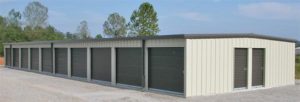
Having a steel building professionally built offers the advantage of expertise, efficiency, and quality craftsmanship. Professional contractors bring industry knowledge, specialized equipment, and experience to ensure a smooth construction process. Costs can vary based on factors such as size, complexity, customization, and location. It is recommended to obtain quotes from reputable contractors to determine the specific cost of your project. By investing in professional construction, you can achieve a high-quality steel building that meets your needs and withstands the test of time.
Exploring Steel Building Sizes: Common Sizes and Their Applications
Steel buildings come in various sizes to accommodate different needs and applications. While the size of a steel building ultimately depends on individual requirements, certain dimensions are more commonly seen due to their versatility and practicality. Let’s explore some of the most common metal building sizes and the purposes they serve.
Small Steel Buildings:
- 20′ x 30′: This compact size is often used for small workshops, storage sheds, or garages. It provides sufficient space for personal projects, storage of tools or equipment, and can accommodate a single vehicle.
- 30′ x 40′: A slightly larger size, this steel building is suitable for small businesses, hobby workshops, or storage facilities. It offers more room for equipment, machinery, and workspace.
- 40′ x 60′: This size is popular for agricultural purposes such as hay storage, equipment shelters, or livestock housing. It provides ample space for large equipment, tractors, or multiple vehicles.
Medium-Sized Steel Buildings:
- 50′ x 100′: This mid-sized steel building is commonly used for commercial or industrial purposes. It can accommodate retail spaces, workshops, warehouses, or auto repair shops. It offers a versatile layout and ample room for various operations.
- 60′ x 80′: With its wide span, this size is suitable for sports facilities, indoor recreational centers, or larger-scale storage needs. It can house basketball courts, fitness centers, or large inventories.
Large Steel Buildings:
- 80′ x 100′: This size is often chosen for industrial applications, including manufacturing facilities, large-scale warehouses, or distribution centers. It offers extensive open space for machinery, inventory storage, and workflow.
- 100′ x 200′: These expansive steel buildings are commonly used for commercial or industrial purposes, such as exhibition halls, indoor sports arenas, or aircraft hangars. They provide vast floor areas for a range of activities and functions.
Custom and Expandable Steel Buildings:
One of the benefits of steel buildings is their ability to be customized or expanded based on specific requirements. Additional sections or bays can be added to existing steel buildings to accommodate growth or changing needs. Customization allows for unique dimensions that meet individual preferences and applications.
Determining the Right Size:
When selecting the size for a steel building, consider factors such as:
- Intended Use: Determine the purpose of the building—whether it’s for storage, manufacturing, retail, or recreational activities. This will help determine the necessary square footage and functional layout.
- Space Requirements: Assess the space needed for equipment, vehicles, inventory, or specific activities. Consider clearance heights, door sizes, and layout flexibility.
- Future Growth: Anticipate future growth or expansion needs. Choosing a size that accommodates potential expansion can save costs and allow for seamless growth.
- Local Regulations: Check local building codes and zoning regulations that may impose restrictions on size or setbacks.
- Budget: Consider the budget for construction, including materials, labor, and any additional features or customization.
While the above sizes are common, it’s essential to work with a steel building provider or contractor to determine the ideal size for your specific needs. They can help assess requirements, provide expert guidance, and tailor a solution that meets your goals and budget.
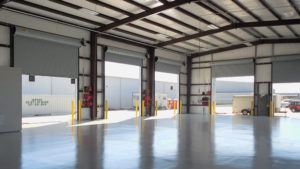
Whether you require a small workshop, commercial facility, or expansive industrial complex, steel buildings offer flexibility and scalability to match your needs. The versatility of steel structures allows for efficient use of space, durability, and cost-effectiveness, making them an excellent choice for a wide range of applications.
Future Metal Building Expansions: Adapting and Expanding Steel Buildings
One of the significant advantages of steel buildings is their flexibility for future expansions and modifications. As businesses and needs evolve over time, steel buildings can be easily adapted to accommodate growth, changes in functionality, or increased space requirements. Let’s explore how steel buildings can be modified and expanded, including the possibility of future length expansions.
COMPARE QUOTESWidth and Length Expansions:
Steel buildings are highly versatile when it comes to expanding their width and length. Depending on the original design and construction, extending the width or length of a steel building is a feasible option. Additional bays or sections can be seamlessly added to the existing structure, providing the desired increase in floor area.
Expanding the width of a steel building involves adding new structural framing, roof panels, and wall panels. This process typically requires careful planning and coordination to maintain structural integrity. Similarly, length expansions entail extending the building’s framework and roof system while integrating with the existing structure.
Height Modifications:
Steel buildings also offer flexibility in height modifications. If additional clearance or vertical space is needed, the roof system and support columns can be adjusted to increase the building’s height. This allows for accommodating taller equipment, mezzanine floors, or specialized storage needs. However, it is essential to consider the structural implications and consult with professionals to ensure the modifications align with building codes and safety standards.
Interior Reconfigurations:
Another aspect of modifying steel buildings involves interior reconfigurations. As business needs change, the interior layout can be adjusted to optimize workflow and space utilization. Interior walls and partitions can be added, removed, or repositioned to create different functional areas within the building. This adaptability ensures that steel buildings can grow alongside evolving business requirements.
Customization and Additional Features:
Steel buildings can be further modified and customized to enhance functionality and aesthetics. Additional features such as insulation, HVAC systems, doors, windows, and interior finishes can be incorporated during initial construction or added during future modifications. These customizations improve comfort, energy efficiency, and the overall usability of the steel building.
Benefits of Future Expansions and Modifications:
The ability to modify and expand steel buildings offers several benefits:
- Cost-Effectiveness: Expanding an existing steel building is often more cost-effective than constructing an entirely new structure. By utilizing the existing framework and foundation, costs associated with materials and labor can be significantly reduced.
- Minimized Disruption: Expanding a steel building allows for a smoother construction process compared to starting from scratch. The existing structure provides a solid foundation, and the construction timeline is typically shorter, minimizing disruptions to ongoing operations.
- Consistency and Aesthetics: By expanding a steel building, businesses can maintain consistency in architectural design and aesthetics. This ensures a cohesive look and maintains brand identity.
- Versatility and Scalability: Steel buildings offer unparalleled versatility and scalability. They can adapt to changing needs and accommodate future growth without compromising structural integrity or functionality.
Consulting Professionals
When considering future expansions or modifications to a steel building, it is crucial to consult with experienced professionals. They can provide guidance, assess the feasibility of the desired changes, and ensure compliance with building codes and safety standards. Steel building manufacturers, contractors, and engineers have the expertise to evaluate structural requirements, offer design recommendations, and execute the modifications with precision.
Steel buildings are inherently flexible and can be modified and expanded to meet future needs. With the possibility of width and length expansions, adjustments in height, interior reconfigurations, and customization options, steel buildings offer a practical solution that can adapt to changing requirements. By leveraging the flexibility and scalability of steel structures, businesses can future-proof their investments and accommodate growth and evolving needs with ease. The ability to modify and expand steel buildings not only provides practical advantages but also ensures long-term cost-effectiveness and operational efficiency.
COMPARE QUOTESWhen planning future expansions or modifications, it’s essential to work with experienced professionals who specialize in steel building construction. They can assess the structural requirements, provide design recommendations, and ensure that all modifications are implemented safely and in compliance with building codes. Their expertise ensures that the integrity of the original structure is maintained while seamlessly integrating the new additions.
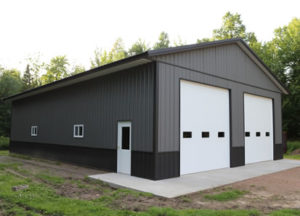
Moreover, steel buildings offer a sustainable option for future expansions. The durability and recyclability of steel make it an environmentally friendly choice. Expanding an existing steel building reduces waste, minimizes the need for additional construction materials, and decreases the overall environmental impact of the project.
By leveraging the adaptability of steel buildings, businesses can optimize their operations, increase storage capacity, accommodate new equipment or machinery, and support growing customer demands. The versatility of steel structures allows for easy reconfiguration and expansion, providing a solution that can evolve along with the changing needs of the business.
Steel buildings offer a robust and flexible foundation for future growth and modifications. The ability to expand the width and length, adjust the height, reconfigure the interior, and customize features ensures that steel buildings can adapt to the ever-changing requirements of businesses. By considering these options and consulting with professionals, businesses can future-proof their steel buildings and create a space that supports their ongoing success and development.
Pre-Engineered Steel Buildings: The Best Option for Efficient and Versatile Structures
When it comes to constructing efficient and versatile buildings, pre-engineered steel buildings stand out as the best option. These pre-engineered metal buildings offer numerous advantages in terms of cost-effectiveness, speed of construction, and design flexibility. Let’s explore why pre-engineered steel buildings are considered the best option for a wide range of applications.
What are Pre-Engineered Steel Buildings?
Pre-engineered steel buildings are structures that are manufactured and pre-designed off-site, specifically engineered to meet building code requirements and industry standards. These buildings are composed of standardized components that are fabricated in a factory setting and then shipped to the construction site for assembly.
Benefits of Pre-Engineered Steel Buildings:
- Cost-Effectiveness: Pre-engineered steel buildings are an economical choice compared to traditional construction methods. The components are mass-produced, reducing material costs, and the streamlined manufacturing process minimizes labor expenses. This cost-effectiveness makes pre-engineered steel buildings a popular choice for both small businesses and large corporations.
- Speed of Construction: Since pre-engineered steel buildings are manufactured off-site, the construction process is significantly faster compared to conventional construction. The standardized components are ready to be assembled, reducing construction time and allowing for quicker occupancy of the building. This time-saving aspect is especially advantageous for businesses that need to start operations promptly.
- Design Flexibility: Pre-engineered steel buildings offer a high degree of design flexibility. The components can be easily customized to meet specific requirements, allowing for various configurations and layouts. This flexibility enables businesses to optimize the use of space and create a building tailored to their unique needs.
- Structural Integrity: Steel is renowned for its strength and durability, making pre-engineered steel buildings highly resistant to adverse weather conditions, such as high winds, heavy snow loads, and seismic activity. The engineered design ensures that the building can withstand these elements, providing a safe and secure structure for occupants.
- Versatility in Size and Use: Pre-engineered steel buildings are available in a wide range of sizes, from small structures to large-scale buildings. Whether you need a compact storage facility, an expansive warehouse, or an office complex, pre-engineered steel buildings can accommodate your square footage requirements. Their versatility makes them suitable for various applications, including commercial, industrial, agricultural, and recreational purposes.
- Energy Efficiency: Pre-engineered steel buildings can be designed to incorporate energy-efficient features, such as insulation, cool roofing, and energy-efficient windows. These measures help to reduce energy consumption, lower operating costs, and create a comfortable indoor environment.
Why Pre-Engineered Steel Buildings are the Best Option:
Pre-engineered steel buildings offer a combination of advantages that make them the best option for many construction projects. The benefits of cost-effectiveness, speed of construction, design flexibility, structural integrity, versatility in size and use, and energy efficiency set pre-engineered steel buildings apart from traditional construction methods.
Moreover, the use of steel as the primary structural material ensures a long-lasting, low-maintenance, and sustainable building. Steel is recyclable, which contributes to environmental sustainability and reduces the carbon footprint of construction projects.
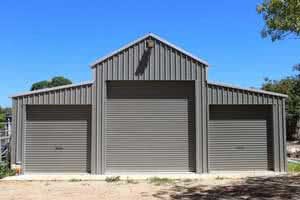
Pre-engineered steel buildings are the best option for efficient and versatile structures. They provide a cost-effective, quick, and customizable solution for a wide range of applications. With their design flexibility, structural integrity, and energy efficiency, pre-engineered steel buildings offer businesses and property owners a practical and reliable choice for their construction needs.
Metal Building Roof Style Options: Finding the Perfect Fit for Your Structure
When it comes to metal buildings, roof style options play a crucial role in the overall design, functionality, and aesthetic appeal. Choosing the right roof style not only enhances the structural integrity of the building but also influences its performance, durability, and maintenance requirements. Let’s explore some of the common metal building roof styles to help you find the perfect fit for your structure.
1. Regular/Roof-Only Style:
The regular/roof-only style is the simplest and most economical roof option for metal buildings. It features a single-slope design with the roof slope running from the front to the back of the building. This style is often used for smaller structures, such as sheds, storage buildings, or carports. It provides effective water drainage and is suitable for regions with low precipitation.
2. A-Frame Vertical Roof Style:
The A-frame vertical roof style is a popular choice for larger metal buildings and structures that require increased durability and superior water runoff. It features a sloping roof with vertically-oriented panels that run from the peak of the structure down to the eaves. This design prevents water, snow, and debris accumulation on the roof, making it ideal for regions with heavy precipitation or where snow load is a concern. The A-frame vertical roof style provides excellent structural strength and is recommended for larger commercial buildings, warehouses, or agricultural structures.
3. A-Frame Horizontal Roof Style:
The A-frame horizontal roof style, also known as a boxed-eave roof style, combines the strength of the A-frame design with horizontal roof panels. It offers a more traditional and residential look compared to the vertical roof style. This style is suitable for a wide range of applications, including garages, workshops, retail spaces, and residential metal buildings. While it provides adequate water runoff, it is important to note that the horizontal roof panels may allow some debris to collect on the roof.
4. A-Frame Vertical with Mansard Roof Style:
The A-frame vertical with mansard roof style is a distinctive option that combines the vertical roof panels with a flat roof section, known as the mansard. The mansard section typically encircles the top perimeter of the building, creating a decorative architectural feature. This roof style offers both functionality and aesthetics, making it suitable for commercial buildings, retail spaces, or structures that require a more refined appearance.
5. Custom Roof Styles:
In addition to the standard roof styles mentioned above, many metal building manufacturers offer custom roof options to meet specific design or architectural requirements. These can include hip roofs, gambrel roofs, curved roofs, or even combination roof styles. Custom roof styles allow for more design flexibility and can be tailored to suit unique building projects.
COMPARE QUOTESFactors to Consider when Choosing a Roof Style
When selecting a roof style for your metal building, consider the following factors:
- Climate and Weather Conditions: Consider the local climate, including rainfall, snowfall, wind patterns, and temperature fluctuations. Choose a roof style that can withstand the elements prevalent in your area.
- Building Size and Purpose: The size and purpose of the building influence the choice of roof style. Larger structures may require sturdier designs with superior water runoff capabilities.
- Aesthetics: The desired look and architectural style of the building play a role in the roof style selection. Consider how the chosen roof style complements the overall design and appearance.
- Maintenance: Different roof styles have varying maintenance requirements. Consider the ease of cleaning, debris removal, and long-term upkeep when making your decision.
- Budget: Evaluate the cost implications of each roof style option. Some styles may require additional materials or construction complexity, which can impact the overall project budget.
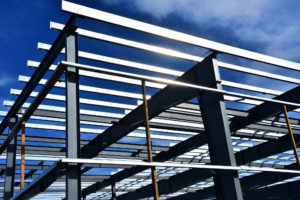
Commercial Steel Buildings vs. Residential Use: Understanding the Differences
Commercial steel buildings and residential steel buildings serve distinct purposes and have unique design considerations. While both types of buildings utilize the strength and versatility of steel structures, they differ in terms of size, functionality, and specific requirements. Let’s explore the differences between commercial steel buildings and those used for residential purposes.
Commercial Steel Buildings:
Commercial steel buildings are designed to meet the specific needs of businesses and organizations. They are typically larger in size and are constructed to accommodate a variety of commercial activities. Here are some key aspects of commercial steel buildings:
- Size and Scale: Commercial steel buildings are often larger than their residential counterparts. They can range from a few thousand square feet to tens of thousands of square feet. The expansive size allows for accommodating retail spaces, warehouses, offices, manufacturing facilities, or multi-purpose complexes.
- Customization and Flexibility: Commercial steel buildings offer a high degree of customization. They can be tailored to suit the specific requirements of a business, with features such as large open spaces, mezzanine floors, specialized storage areas, and office layouts.
- Durability and Structural Integrity: Commercial steel buildings are engineered to withstand heavy use, constant foot traffic, and the demands of commercial operations. They are designed to meet strict building codes and standards, ensuring superior structural integrity, safety, and longevity.
- Versatility: Commercial steel buildings are versatile and can adapt to changing business needs. They can be easily modified or expanded to accommodate growth, additional functionalities, or changes in the business operation.
- Specialized Features: Depending on the industry or business type, commercial steel buildings may require specialized features such as loading docks, commercial-grade insulation, HVAC systems, fire suppression systems, or energy-efficient components.
Residential Steel Buildings:
Residential steel buildings, on the other hand, are primarily used for residential purposes and cater to the needs of homeowners. Here are some key aspects of residential steel buildings:
- Size and Functionality: Residential steel buildings are typically smaller in size compared to commercial buildings. They are designed to serve as homes, garages, workshops, or storage buildings for personal use.
- Design Aesthetics: Residential steel buildings focus on aesthetic appeal and blend harmoniously with the surrounding residential properties. They can mimic the appearance of traditional homes, incorporating features such as pitched roofs, windows, doors, and exterior finishes.
- Living Comfort: Residential steel buildings prioritize living comfort and include features like insulation, ventilation systems, plumbing, electrical wiring, and interior finishes to create a comfortable and habitable living space.
- Customization: Residential steel buildings offer customization options to match the specific needs and preferences of homeowners. They can be designed with varying floor plans, room layouts, and interior features to create a personalized living environment.
- Cost-Effectiveness: Residential steel buildings are often a cost-effective option compared to traditional residential construction. They offer quick construction timelines, reduced labor costs, and the durability of steel, resulting in long-term cost savings.
Choosing the Right Structure for Your Needs:
When deciding between commercial and residential steel buildings, consider the specific purpose, size requirements, functionality, and budget constraints. Commercial steel buildings are well-suited for businesses, offering large-scale solutions and customization options. Residential steel buildings cater to the needs of homeowners, providing cost-effective, customizable living spaces or auxiliary structures.
Whether you require a commercial steel building for retail, manufacturing, or warehousing purposes, or a residential steel building for a home, garage, or storage, steel structures provide durable, versatile, and cost-effective solutions for a wide range of needs. Consult with professionals in the steel building industry to ensure you choose the right structure that meets your specific requirements and aligns with your goals and budget.
Determining Your Building’s Purpose and Size:
To make an informed decision between commercial and residential steel buildings, start by identifying the intended purpose and size requirements of your building. Consider the following factors:
- Business Needs: If you are a business owner or investor, assess your specific requirements. Determine the type of commercial activities, space requirements, and functional layout needed to optimize your operations. If you need a larger building with specialized features like loading docks or office spaces, a commercial steel building would be the right choice.
- Residential Use: For homeowners, evaluate your needs. Determine if you require a standalone home, garage, workshop, or storage building. Consider factors such as the number of rooms, living space, storage capacity, and desired architectural aesthetics. Residential steel buildings offer customization options to create a comfortable living environment that suits your lifestyle.
- Size Considerations: Consider the size requirements for your building. If you need a larger structure, such as a warehouse or retail space, a commercial steel building is ideal. Residential steel buildings cater to smaller-scale needs, providing space for personal use, vehicle storage, or recreational activities.
Budget and Cost Considerations:
Another crucial aspect in choosing between commercial and residential steel buildings is your budget and cost considerations. Commercial steel buildings tend to be larger and more complex, which can result in higher construction costs. However, they often offer a higher return on investment due to their potential for generating income or supporting business operations.
Residential steel buildings are typically more cost-effective, as they are designed for personal use and have smaller footprints. They provide a cost-efficient alternative to traditional residential construction, with shorter construction timelines and reduced labor costs.
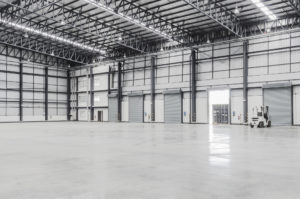
Consultation and Professional Guidance:
To make an informed decision, consult with professionals in the steel building industry. They can assess your specific needs, provide design recommendations, and offer cost estimates based on your requirements. Working with experienced architects, engineers, and contractors ensures that your chosen steel building aligns with your objectives, meets building codes, and is tailored to your preferences.
Whether you opt for a commercial steel building to support your business ventures or a residential steel building to create a comfortable living space, steel structures offer numerous benefits such as durability, versatility, and cost-effectiveness. Evaluate your needs, consider the purpose and size requirements, and work with professionals to choose the right steel building solution that best suits your unique requirements and budget.
Steel Buildings for Versatile Commercial Applications and Ample Storage Space
In the realm of construction, steel structures have proven to be a go-to solution for versatile commercial applications and the creation of expansive storage spaces. With their inherent strength, durability, and customization options, steel buildings offer a cost-effective and efficient solution for businesses in need of larger structures and ample storage capacity.
Steel Structure Standard Sizes: Steel buildings come in a range of standard sizes, catering to the varying needs of commercial applications. From small-scale operations to large industrial facilities, there is a steel structure size to accommodate every requirement. These standard sizes provide businesses with a starting point for designing their ideal workspace or storage facility.
Large Metal Buildings for Commercial Applications: When it comes to commercial structures, large metal buildings are the go-to choice for businesses across industries. These structures provide expansive interior space that can be tailored to suit specific operational needs. From warehouses and distribution centers to manufacturing plants and retail spaces, large metal buildings offer the flexibility and functionality required for successful commercial ventures.
Ample Storage Space: Storage is a critical aspect of many businesses, and steel buildings excel in providing ample storage space. Whether it’s inventory, equipment, or raw materials, steel buildings can be customized to maximize storage capacity. Clear-span designs allow for unobstructed space, while mezzanine levels can be added for additional storage or office space.
Versatile Commercial Applications: Steel buildings are versatile, accommodating a wide range of commercial applications. Their adaptability allows businesses to create spaces tailored to their specific needs. Retailers can design showrooms and storefronts that captivate customers, while manufacturers can configure the layout to optimize workflow and operational efficiency. The open interiors of steel buildings can be divided into separate sections for multiple business functions or modified as needed to accommodate changes in operations.
In the realm of commercial applications, steel buildings offer an unmatched combination of strength, durability, and customization options. Their versatility makes them an ideal choice for businesses seeking flexible and scalable solutions.
COMPARE QUOTESChoosing the Right Steel Building for Your Needs: When considering a steel building for commercial use, carefully assess your specific requirements. Consider factors such as the size of the structure, storage needs, functionality, and future expansion plans. Working with reputable steel building providers ensures that your structure is designed to meet your unique needs while complying with industry standards and building codes.
Unlock the Potential of Steel Buildings: With their impressive attributes and adaptability, steel buildings have become the go-to option for commercial applications and businesses in need of ample storage space. The strength of the steel structure, combined with a variety of standard sizes, allows for the creation of large metal buildings that accommodate diverse commercial requirements. By choosing a steel building for your business, you unlock a world of possibilities for customized spaces, efficient operations, and future growth.
So, whether you’re a retailer, manufacturer, or involved in other commercial ventures, explore the potential of steel buildings to transform your operations. Embrace the benefits of steel, create a space tailored to your needs, and elevate your business to new heights with a steel building designed to optimize your success.
COMPARE QUOTES
Leave a Reply